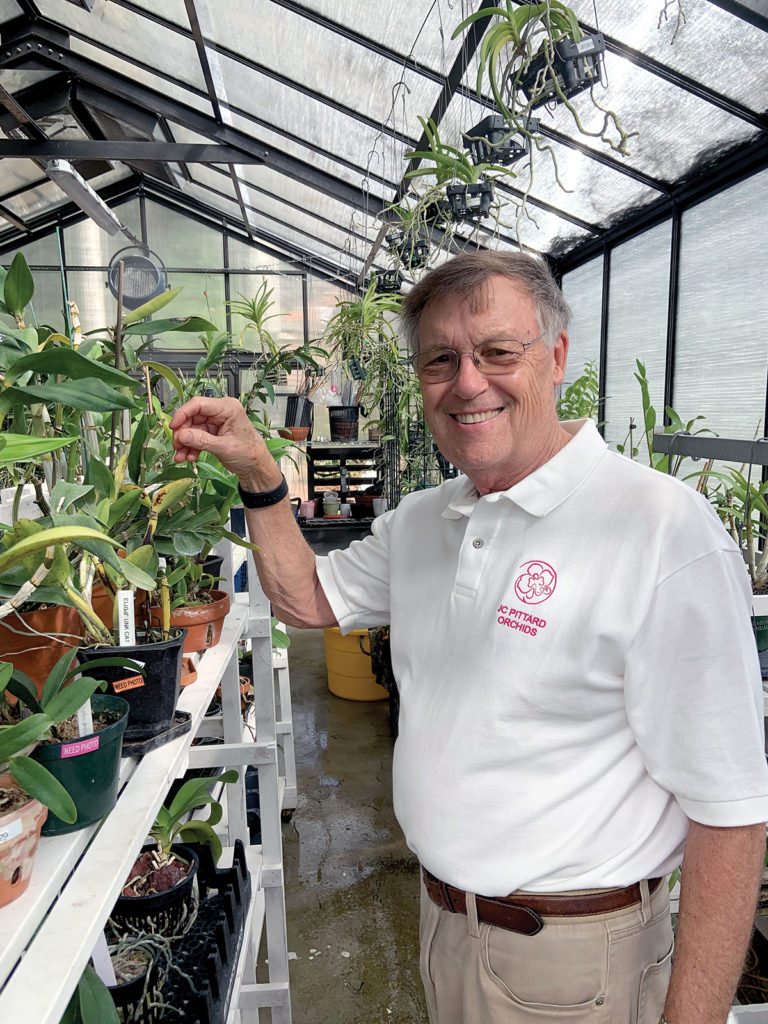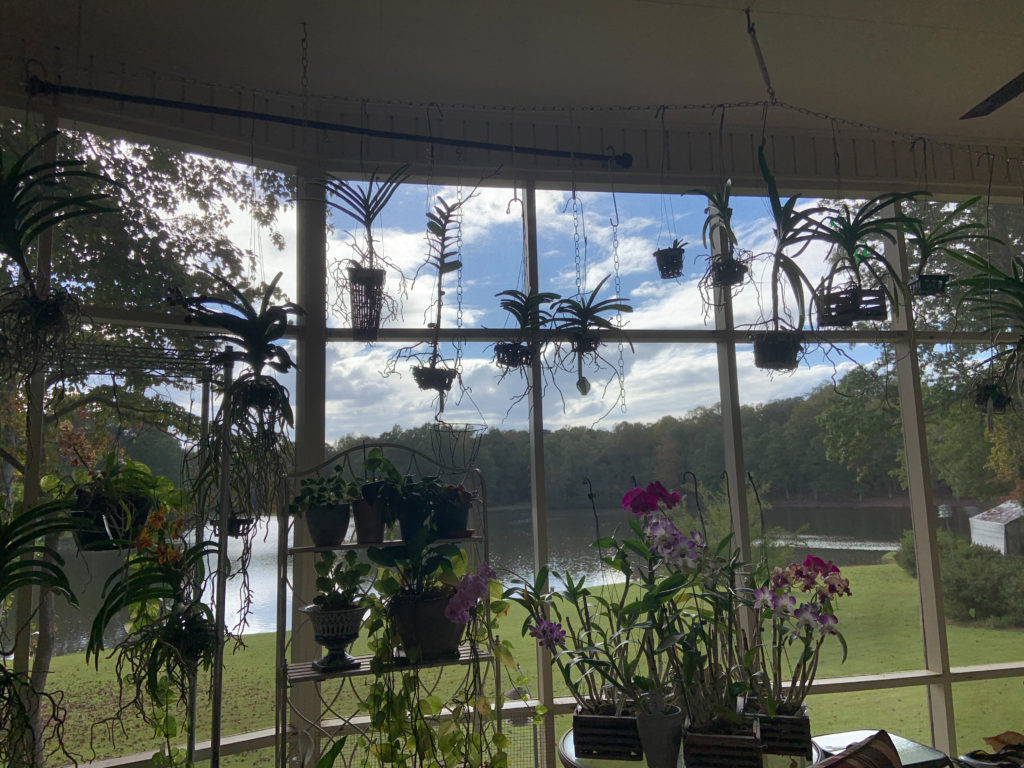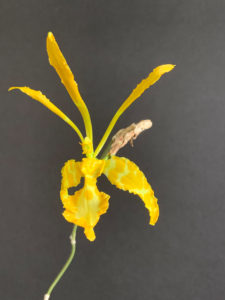Poinsettias, Christmas cactuses, amaryllises, paperwhites and other traditional holiday plants make the season bright, but to make the season sublime, consider getting an orchid.

Orchids belong to one of Earth’s oldest and largest flowering plant families, Orchidaceae, which includes an estimated 25,000-30,000 naturally occurring species and more than 100,000 developed hybrids. Though often thought of as tropical plants, orchids are actually found on every continent except Antarctica, including here in Alabama, which is home to more than 50 native species.
Compounds found in various orchids have been used for eons in perfumes, medicines and as spices (vanilla, for example, is derived from a commercially grown vining tropical orchid). But they are also treasured for their exquisite blooms, which come in a phenomenal array of colors, sizes and shapes.
Once considered exclusive, hard-to-find plants, a number of different orchid types (genera) are now readily available at floral departments and garden centers across the state and nation, and they have a lot to offer. Not only are their allergen-free blooms long-lasting (most last for weeks, some for months), with proper care the plants will live — and rebloom — for years to come.

While orchids have a reputation for being difficult to manage, according to orchidist (yes, that really is a word) Joel Pittard of Auburn, they simply need what every plant needs — proper levels of light, water, nutrients and temperatures.
“If you get those right, it’s not a big deal,” he says, something’s he’s learned over some 15 years of orchid growing, an interest that began when Pittard attempted to bring a few spent orchids back into bloom.

His efforts were only mildly successful until he and his late wife, Ann, became a couple. Ann, who sadly passed away in June, lived in a house with a large screened back porch overlooking a lake, which proved to be an orchid-growing paradise. The two began going to orchid shows and sales, and soon reached the porch’s orchid capacity. At Ann’s suggestion, they built a small greenhouse near the edge of the lake where they could care for and propagate an ever-growing collection.
Though some orchids are easier to grow than others, Pittard says most simply need access to plenty of indirect sunlight, moderate temperatures and weekly or bi-weekly watering. It’s the watering that can be tricky.

“Orchids are usually killed because they get too much water,” he says, which is often a problem because of how they are potted. Most orchids are epiphytes, or “air plants,” that take their nutrients and water from the air and surrounding environment rather than from soil, so they don’t really even need a pot to grow. However, store-bought plants are usually produced in plastic liners filled with loose bark which are then sold in decorative, often nondraining containers. If water collects in the container’s base, those air-loving roots will die, but that’s easy to fix.
“Just take the orchid out of the pot, water it thoroughly and let it drain before putting it back into the pot,” Pittard says.
Happy, healthy orchids are also more likely to rebloom, the frequency of which varies among orchid types. For example, Pittard said the elegant moth-like Phalaenopsis orchids so common in stores will bloom for a long time but may have only one bloom cycle each year. On the other hand, Dendrobiums, another readily available orchid with flowers that come in a diverse array of shapes and colors, often have several bloom cycles in a single year.
Though they can rebloom on their own, sometimes orchids need a bit of coaxing — usually with a well-timed dose of fertilizer and a period of cooler temperatures. Pittard said the American Orchid Society’s website at www.aos.org has a wealth of beginner-level information on how to bring orchids into bloom as well as links to local orchid societies, shows and sales, all of which mean those orchids you get or give this holiday season can provide sublime joy all year long.
December Tips
• Protect holiday plants from extreme temperatures and water as needed.
• Plant shrubs, roses, fruit and nut trees and spring bulbs.
• Mulch tender or newly installed plants.
• Start seeds for cool-season vegetables.
• Plant pansies and other cool-season annuals.
• Keep bird feeders and birdbaths full.
• Make an end-of-year donation to a garden-related nonprofit.
Katie Jackson is a freelance writer and editor based in Opelika, Alabama. Contact her at [email protected].


